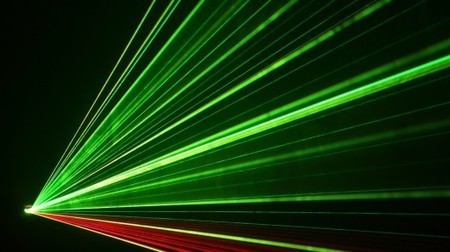
Robohub.org
New laser 25X more powerful in mid-infrared | Gizmag
“The erbium-doped zirconium-fluoride-based glass fiber laser operates in the mid-infrared frequency range, which is the range where many hydrocarbon gases absorb light. The laser can produce 25 times as much light as lasers operating at a similar wavelength according to the researchers, paving the way for the detection of previously obscured, low concentrations of gases.”
John Payne‘s insight:
Robotic applications could include detecting the condition of soil and plants by means of the hydrocarbon compounds which persist in higher concentration below the leaf canopy than above it, for example the early detection of mold or anaerobic conditions.
See on www.gizmag.com
John Payne
Related posts :
The science of human touch – and why it’s so hard to replicate in robots
The Conversation
24 Dec 2025
Trying to give robots a sense of touch forces us to confront just how astonishingly sophisticated human touch really is.
Bio-hybrid robots turn food waste into functional machines
EPFL
22 Dec 2025
EPFL scientists have integrated discarded crustacean shells into robotic devices, leveraging the strength and flexibility of natural materials for robotic applications.
Robot Talk Episode 138 – Robots in the environment, with Stefano Mintchev
Robot Talk
19 Dec 2025
In the latest episode of the Robot Talk podcast, Claire chatted to Stefano Mintchev from ETH Zürich about robots to explore and monitor the natural environment.
Artificial tendons give muscle-powered robots a boost
MIT News
18 Dec 2025
The new design from MIT engineers could pump up many biohybrid builds.
Generations in Dialogue: Human-robot interactions and social robotics with Professor Marynel Vasquez
Catch the latest podcast in the new series from AAAI.
Robot Talk Episode 137 – Getting two-legged robots moving, with Oluwami Dosunmu-Ogunbi
Robot Talk
12 Dec 2025
In the latest episode of the Robot Talk podcast, Claire chatted to Oluwami Dosunmu-Ogunbi from Ohio Northern University about bipedal robots that can walk and even climb stairs.
Radboud chemists are working with companies and robots on the transition from oil-based to bio-based materials
Radboud University
10 Dec 2025
The search for new materials can be accelerated by using robots and AI models.
Generations in Dialogue: Embodied AI, robotics, perception, and action with Professor Roberto Martín-Martín
Catch the latest podcast in the new series from AAAI.



